ATSB Publishes Preliminary Report on APL England Incident
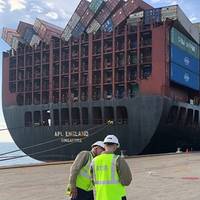
A preliminary investigation report published by the Australian Transport Safety Bureau (ATSB) details that a containership was rolling and pitching heavily in rough seas and high winds when it lost 50 containers overboard about 46 nautical miles south-east of Sydney in May 2020.The ongoing investigation’s preliminary report sets out the incident’s sequence of events and outlines that as the APL England travelled down the east coast of Australia, the Bureau of Meteorology issued regular forecasts regarding a complex low pressure system developing off the south-east of the country…
Viking Sky: Low Lube Oil Triggered Shutdown
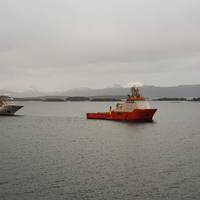
The engines of a luxury cruise ship that narrowly escaped disaster during a storm off Norway on Saturday failed because of relatively low levels of lubricating oil in the engines, the Norwegian Maritime Authority said on Wednesday.The Viking Sky, with almost 1,400 passengers and crew aboard, sent out a mayday signal on Saturday as it drifted in rough waters in the Norwegian Sea to within 100 metres of land.
Lessons Learned from the El Faro Casualty

The U.S. Coast Guard has issued an alert informing operators of the role that the main propulsion lube oil system was found to have played in the 2015 sinking of U.S. cargo ship El Faro. All 33 crew on board died when the 790-foot El Faro sank close to the eye of Hurricane Joaquin near the Bahamas on October 1, 2015, while en route from Jacksonville, Fla. to Puerto Rico. Loss of propulsion during extremely heavy weather was revealed as a major contributing factor to the vessel’s sinking, according to The Coast Guard Marine Board Report on the incident.
MOL Adopts 'Common Rail Fuel Injection' System
Mitsui O.S.K. Lines, Ltd. announced that its group company, Mitsui O.S.K. Kinkai, Ltd. will use a main engine equipped with the MAN Diesel & Turbo SE (MDT)-developed “common rail fuel injection system” on a newbuilding vessel. Shop test of the main engine was completed on January 29 and the vessel is slated for launching in 2018. After launched, Mitsui O.S.K. Kinkai, MDT and Makita Corporation(President: Yu Makita; headquarters: Takamatsu-shi, Kagawa Prefecture)will continue testing the system with support from MOL while the vessel is in service. The pilot engine for MDT, manufactured by Makita Corporation, is the first to adopt the MAN B&W 2 Cycle engine.
5 Types of Container Weighing Systems for Ports and Terminals
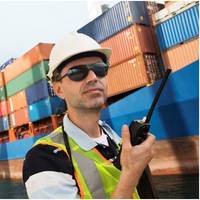
Every port and terminal facility needs weighing systems for containers. Weighing is critical in several processes in ports where accurate readings are paramount. To achieve this, the following weighing solutions can be incorporated. Weighbridges offer a vehicle weighing solution that may be placed at entrances and exits of the ports and terminals. An incoming truck can drive over the weighbridge and the total weight will be registered immediately. The tare weight of the truck must be deducted from the total weight to determine the container weight.
GoFree Vessel Monitoring Adds Global Connectivity with Vodafone
Vodafone announced today that it is working with Navico, an international marine electronics company, to bring global connectivity to Navico’s GoFree product suite. Using the Vodafone Global Internet of Things (IoT) SIM, GoFree can provide boaters, fleet managers, and service technicians with the ability to monitor, log, transmit and report important vessel information in real-time. With the connectivity, GoFree Track, an affordable hardware system,can track critical vessel information like engine hours, battery status, oil pressure, coolant temperature, fuel consumption, and more. By tracking these on-board assets, boaters can instantly access details of potential mechanical problems and share them with technicians to service the specific area in need.
Artificial Stupidity
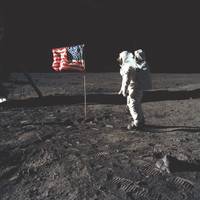
There is increasing speculation regarding when the first unmanned cargo ship will set sail. The more important question is when will the first unmanned cargo ship spectacularly fail? We (not me personally, but humans as a group) have utilized artificial intelligence to launch unmanned craft into space on increasingly long and complex voyages. Mostly, these space missions succeed and provide us with wonderful images and reams of important data. Therefore, it is theoretically and practically possible to construct and operate an unmanned cargo ship.
Preventing Loss of Propulsion After Fuel Switch to Low Sulfur Distillate Fuel

The International Convention for the Prevention of Pollution from Ships (MARPOL) ANNEX VI Regulation 14 requires ships with Marine Compression-Ignition Engines at or Above 30 Liters per Cylinder use fuel with sulfur content less than 0.1%, after 01 January 2015 within the Baltic Sea area – as defined in Annex I of MARPOL, North Sea area – as defined in Annex V of MARPOL; within 200 miles of the North American area and when operating in the United States Caribbean Sea area – as defined in Appendix VII of Annex VI of MARPOL.
Fukushima Floating Offshore Wind Project Progressing
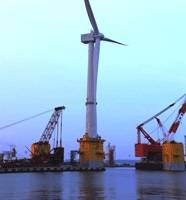
An experimental offshore floating wind farm project sponsored by the Japanese Ministry of Economy, Trade and Industry has been underway since March 2012. Participating in the project is a consortium comprised of Marubeni (project integrator), the University of Tokyo (technical advisor), Mitsubishi, Mitsubishi Heavy Industries, Japan Marine United, Mitsui Engineering & Shipbuilding, Nippon Steel & Sumitomo Metal, Hitachi, Furukawa Electric, Shimizu, and Mizuho Information & Research.
Making Money with Marine Monitoring
The myriad benefits of gplink are well documented. Remote Monitoring and Tracking company gplink bills itself as the most capable remote diagnostic tool available for high horsepower systems. In a nutshell, gplink monitors commercial vessels and equipment, allowing users to detect anomalies before they turn into problems. Remotely monitoring, tracking and troubleshooting expensive and far flung assets is now a mature concept, reaching all marine markets. Without a doubt, gplink is in the thick of it. Easily configured to monitor the data points that matter most to you, there are literally dozens of applications that can be safely covered.
RV Sikuliaq: Modern Electric Propulsion & Power Management
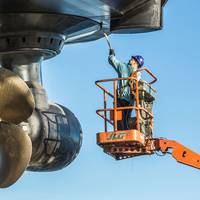
While ships have used electricity to help power vessels for a long time, new and sophisticated diesel-electric technologies are making serious gains in efficiency, noise and environmental impact, and is becoming the propulsion system of choice for some high profile names. A recent case is the diesel-electric powered, RV Sikuliaq (pronounced “see-koo-lee-auk,” an Inupiaq term meaning “young sea ice.”), a vessel embarking on a lifetime of studies in the polar sea region, including examining the effects of climate change and increased human presence in the Arctic.
Fukushima Offshore Floating Wind Farm Update
A consortium has been participating in an experimental offshore floating wind farm project sponsored by the Ministry of Economy, Trade and Industry since March 2012. Preparatory works for the installation of the 7MW oil pressure drive-type wind turbine on the three-column semi-sub floater at Onahama port, Fukushima, are almost completed and delivery of the floater from Nagasaki to Onahama has started today as part of the second term. Assembly and setting of two units of the 7MW oil pressure drive-type floating wind turbines, delivery of the facilities to the testing area, and connection to the undersea cable. Delivery of the three-column semi-sub floater from Nagasaki to Onahama port is in progress.
Experimental Floating Wind Farm Nears Installation

Launched in March 2012, the Fukushima experimental offshore floating wind farm project sponsored by the Ministry of Economy, Trade and Industry is nearing the installation phase as preparatory works for the installation of the 7MW oil pressure drive-type wind turbine on the three-column semi-sub floater at Onahama port, Fukushima, are almost completed and delivery from Nagasaki to Onahama has started today. Participating in the experiment is a consortium comprised of Marubeni (project integrator)…
MacGregor Launches Steering Alert System
MacGregor, part of Cargotec, has launched Soteria, a new alert system designed to complement its Hatlapa and Porsgrunn range of steering gear. Named after the Greek goddess of safety, the system has been designed to offer a series of benefits for both ship owners and shipyards. “The system’s alert display can be fully integrated on the vessel’s bridge, ensuring clear and easy access to a comprehensive range of alerts,” explained Henrik Schädel, Hatlapa Drives & Controls expert at MacGregor. “The system has been designed for simple, economical installation and requires only one programmable logic controller (PLC), a feature which benefits shipyards," Schädel notes.
Fukushima Experimental Offshore Floating Wind Farm Project Progresses
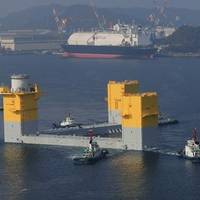
A consortium made up of Marubeni (project integrator), the University of Tokyo (technical advisor), Mitsubishi, Mitsubishi Heavy Industries, Japan Marine United, Mitsui Engineering & Shipbuilding, Nippon Steel & Sumitomo Metal Corporation, Hitachi, Furukawa Electric, Shimizu, and Mizuho Information & Research has been participating in an experimental offshore floating wind farm project sponsored by the Ministry of Economy, Trade and Industry since March 2012. At present, the construction of the three-column semi-sub as part of the second phase has been successfully completed.
Scania 13L Inline; 16L V8 for EPA Tier 3
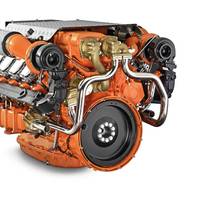
Scania’s 13-liter EPA Tier 3 engine, intended for propulsion and auxiliary use, along with the 16-liter EPA Tier 3 engine, debuted last month at the Workboat Show in New Orleans. The engines, as are all Scania powerplants, are based on the company’s new modular engine platform, a platform used across marine, industrial, power generation, truck and bus applications globally. The units are built for simplicity of service and repair, and the company is quick to point out that most can be carried out by a single service technician…
Japan: Experimental Floating Wind Farm Project
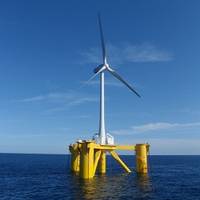
A consortium comprising of Marubeni (project integrator), the University of Tokyo (technical advisor), Mitsubishi, Mitsubishi Heavy Industries, Japan Marine United, Mitsui Engineering & Shipbuilding, Nippon Steel & Sumitomo Metal Corporation, Hitachi, Furukawa Electric, Shimizu and Mizuho Information & Research have been participating in an experimental offshore floating wind farm project sponsored by the Ministry of Economy, Trade and Industry since March 2012. At present, the installation work of 2MW downwind-type floating wind turbine…
Scania 13-Liter Inline Engine for EPA Tier 3
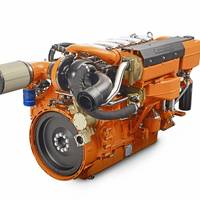
Scania’s 13-liter EPA Tier 3 engine, intended for propulsion and auxiliary use, along with the powerful 16-liter EPA Tier 3 engine, will be showcased at The International Workboat Show in New Orleans, Louisiana. Scania engines are all based on Scania's new modular engine platform, which is used for marine, industrial, power generation, truck and bus applications worldwide. The engines build on a long tradition of power packages that share both technology and architecture with Scania's truck and bus engines.
Scania Unveils the Future

Building on Scania’s new global engine platform is the 16-liter marine V8, delivering up to 1,000 hp and 2,460 Ib./ft. for patrol craft applications, a compact power source that leverages technology and architecture with Scania’s truck and bus engines. “The new 16 liter engine has gone up in horsepower for each duty cycle we offer, which means that we can approach larger vessels,” said Mikael Lindner, President, Scania U.S.A. Inc. Central to the Scania line and this powerplant in particular is adherence to high power-to-weight ratio…
New Control Systems Installed on USS Mount Whitney
Naval Sea Systems Command completed the installation of new control systems aboard USS Mount Whitney (LCC 20), April 8, which will reduce fuel usage and crew workload. Engineers from the Naval Surface Warfare Center Carderock Division - Ship Systems Engineering Station SSES installed the new control systems on a number of shipboard engineering components and are specifically designed to improve automation on the optimally manned ships. "Military Sealift Command-operated ships like the Mount Whitney traditionally have lower manning levels, therefore being able to operate many systems from one central control unit is essential," said Matthew Douglass, Auxiliary Machinery Automation Branch head.
Control Systems on LCC 20 Saves Fuel, Reduces Workload
Naval Sea Systems Command completed the installation of new control systems aboard USS Mount Whitney (LCC 20), April 8, which will reduce fuel usage and crew workload. Engineers from the Naval Surface Warfare Center Carderock Division - Ship Systems Engineering Station (NSWCCD-SSES) SSES installed the new control systems on a number of shipboard engineering components and are specifically designed to improve automation on the optimally manned ships. “Military Sealift Command-operated ships like the Mount Whitney traditionally have lower manning levels, therefore being able to operate many systems from one central control unit is essential,” said Matthew Douglass, Auxiliary Machinery Automation Branch head.
Engine Showcase: Scania 16-liter V8 EPA Tier 3 Engine
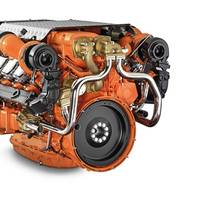
Scania’s 16-liter V8 EPA Tier 3 engine, intended for propulsion and auxiliary use, will be one of two engines showcased at The International Workboat Show in New Orleans, Louisiana. Scania engines are all based on Scania's new modular engine platform, which is used for marine, industrial, power generation, truck and bus applications worldwide. The engines build on a long tradition of amazing power packages that share both technology and architecture with Scania's truck and bus engines. This makes for exceptional performance.
A Boxed Set In Denmark Mine Warfare Capability Comes as a Boxed Set
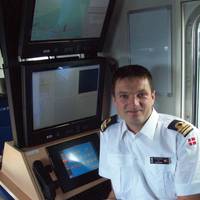
The Danish Navy is the expert when it comes to flexible, modular combat capability. It created the StandardFlex modules for the Flyvefisken class of patrol vessels in 1995 that was built specifically to operate with the containerized modules. But Denmark is no longer facing a Cold War threat to its waters. Instead, it is assuming a broader role involved in international partnerships and coalitions. The Flyvefisken-class has been retired. Today, the new ships of the Danish Navy…







